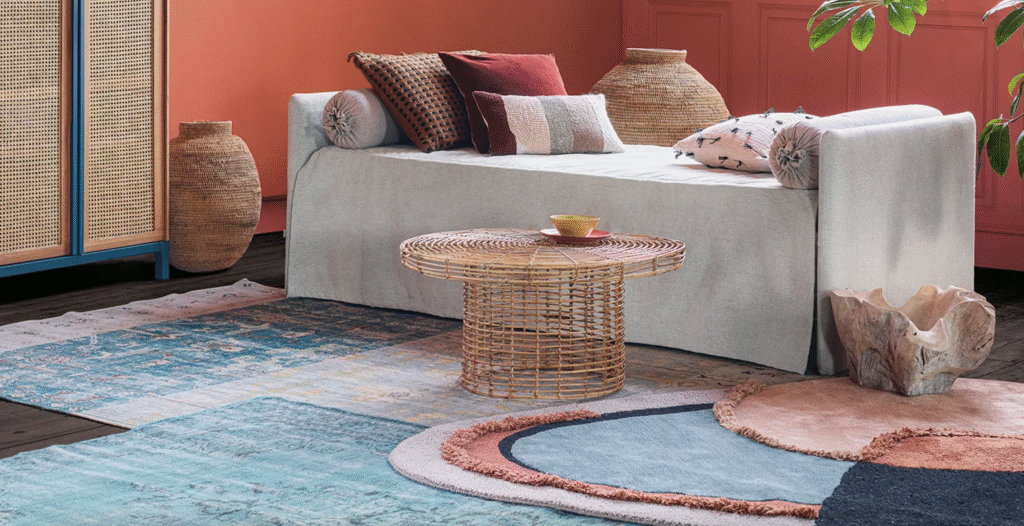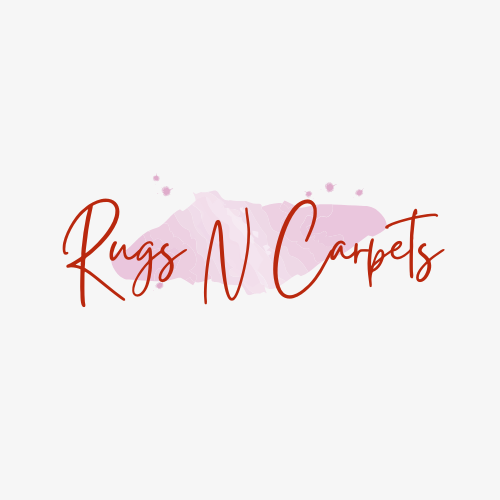Because one rug is nice—but two rugs? That’s style with a capital S.
You’ve probably seen it on Pinterest or in a celebrity home tour: rugs layered so effortlessly that the room looks like it was styled by a professional. Rug layering is a clever design move that adds texture, dimension, and personality to your space. And no, it’s not just for boho-chic homes with macramé and 57 indoor plants (though it does work well there too).

Let’s break it down, layer by layer—literally.
Why Layer Rugs?
Because one rug can sometimes feel a little… lonely. Layering:
- Warms up large or awkward spaces
- Adds depth and contrast
- Allows you to experiment with colors/patterns without commitment
- Helps rescue a rug that’s too small for the space (yes, we’ve all made that mistake)
Pro tip: Have a bold rug you love, but it’s too small for the room? Just layer it on top of a neutral base rug. Instant save.
Start with a Solid Foundation
Your base rug should be:
- Neutral: Think jute, sisal, flatweave cotton, or a low-pile wool in beige, grey, or ivory
- Larger: Big enough to define your space (usually 8x10ft or 9x12ft for living rooms)
This is your blank canvas—the plain white tee of rugs.
Did you know? Layering a low-pile base rug can even help absorb sound and improve insulation. Design and function? Chef’s kiss.
Add Your Personality on Top
Now comes the fun part—the top rug.
Look for:
- Color or pattern: Go bold! Persian, kilim, geometric, tribal, abstract—whatever suits your style.
- Smaller size: Usually 5x7ft or 6x9ft
- High contrast: If your base rug is light, go dark or vibrant on top—and vice versa
Place it where the eye naturally goes: under the coffee table, in front of the sofa, or angled just enough to say “Yes, I have an interior design degree in vibes.”
Placement: Symmetry Is Overrated
Layering doesn’t mean stacking rugs like pancakes. Instead:
- Offset the top rug at a slight angle for a relaxed, effortless look
- Align it center to center if you prefer clean lines
- Let it peek out just enough—like a shirt under a blazer
Style tip: Want to add a third layer? A small faux fur or sheepskin casually tossed adds serious drama. You’ll suddenly feel like someone who says “darling” unironically.
But… Is This a Nightmare to Clean?
Not at all!
- Vacuum regularly, starting with the top rug and then lifting the corners of the base
- Use rug pads between layers to prevent slipping or wrinkling
- Rotate your top rug occasionally so it wears evenly
Avoid layering in high-moisture areas like bathrooms, terraces or kitchens unless you’re using washable rugs.
Where Does Rug Layering Work Best?
- Living Rooms: Anchor with a jute base, top with a patterned wool
- Bedrooms: Use a large neutral rug under the bed, add a smaller soft rug by the side
- Entryways: Layer a narrow kilim over a flatweave base to catch dirt in style
- Outdoor patios: Yes, even there! Use outdoor-safe rugs for cozy vibes.
Final Thoughts: Your Floor, Your Rules
Rug layering is a low-risk, high-reward design trick. It’s like mixing prints in fashion—it sounds scary, but when it works, it works. So grab those rugs you’ve been eyeing and start styling like the design genius you are (or pretend to be at brunch).
Explore our collection of textured flatweaves, bold accents, and cosy toppers. Because every great room deserves more than one great rug.
